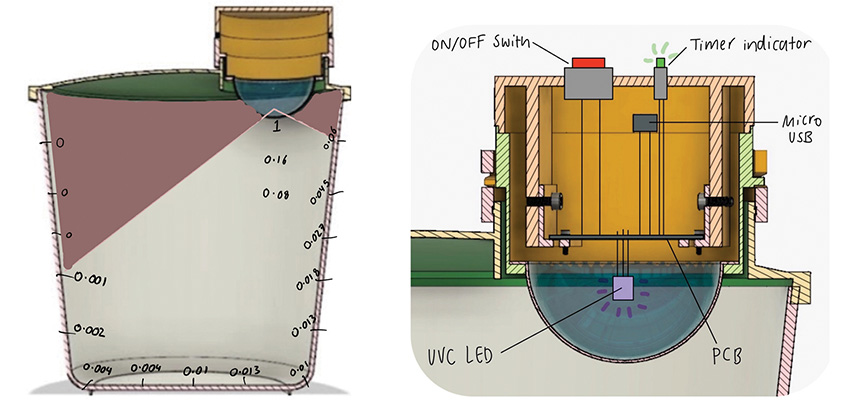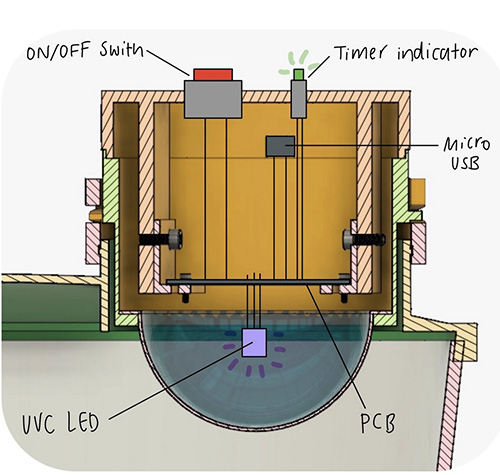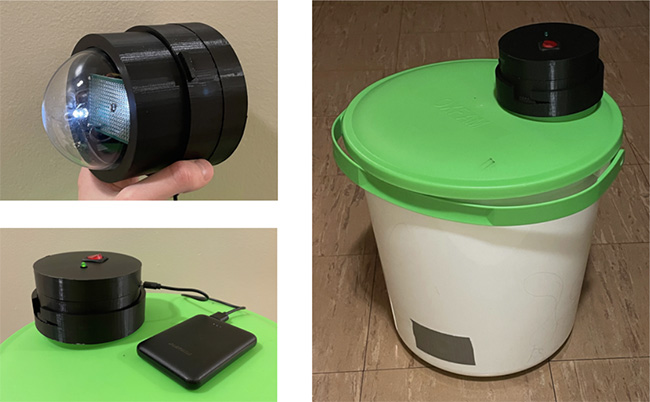
Problem framing
To provide FairCap with a prototype that fits onto an Oxfam Bucket and lends itself to large scale manufacturing By redesigning the existing UV light prototype and researching the various materials and manufacturing techniques using modeling, prototyping, and material considerations while also considering cost, safety, durability, and efficiency, as measured by manufacturing price, international safety standards, lifetime of the product, and energy usage to be as follows: under $20, meeting UNICEF standards, a lifetime of at least 1000 use cycles, and a dosage time less than 30 minutes.
Technical solution



Hand-off to partner
As a final deliverable for this project, in addition to the prototypes, the team will provide CAD model of structure, including several iterations of the design, the final electronics schematics, and an analysis report. This analysis report will include recommendations on the light dosage and configuration, materials selection for all components, including the glass dome, manufacturing recommendations, and structural considerations.
MIT D-Lab Class
Student team
MIT students unless otherwise noted.
- Tolu Asade - Course 2 Junior
- Harum Bhinder - Harvard University, Masters in Learning Design, Innovation and Technology
- Caroline Boone - Course 2 Senior
- James Donegan - LGO Mechanical Engineering (MS/MBA)
- Francisco J. Galindez - LGO Mechanical Engineering (MS/MBA)
- Joana Nikolova - Course 16 Junior
- Sylvie Waft - Course 2 Junior
Community partner
Faircap, located in the UK.
- Mauricio Cordova

